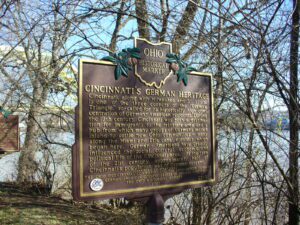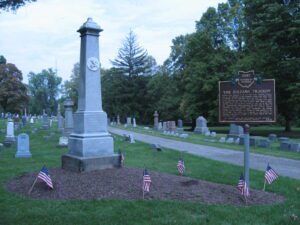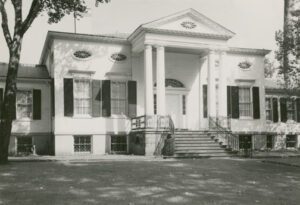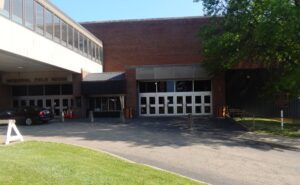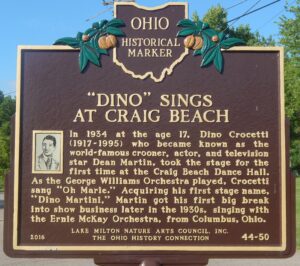, OH
Cincinnati, along with Milwaukee and St. Louis, is one of the three corners of the “German Triangle,” so-called for its historically high concentration of German-American residents. During the 19th century, Cincinnati was both a destination for immigrants to the tri-state area and a hub from which many groups of Germans moved inland to settle new Ohio communities-many along the Miami and Erie canal corridor which began here. German-Americans have greatly influenced the social, cultural, economic and political life of the Cincinnati area. At the turn of the 21st century, approximately half of Cincinnati’s population was of German descent. (Continued on other side)
, OH
Soldiers from Company F of the 115th Ohio Volunteer Infantry died in the explosion of the steamboat Sultana seven miles north of Memphis on the Mississippi River on April 27, 1865. The Sultana reportedly carried more than 2,400 passengers–six times its capacity of 376. The vast majority were Union soldiers recently freed from Southern prisons at the end of the Civil War. Approximately 1,800 passengers and crew died in what is considered the worst maritime disaster in American history. Company F was organized in Stark, Columbiana, and Portage Counties and was mustered into service at Camp Massillon in the fall of 1862. This marker is a memorial to the soldiers of Company F who died as a result of the Sultana tragedy and other war-related causes.
, OH
This Federal house was begun about 1820 for Martin Baum (1765-1831), one of Cincinnati’s early merchants. Art patron and abolitionist Nicholas Longworth (1782-1863) lived here for more than thirty years and commissioned the notable landscape murals in the foyer painted by African-American artist Robert S. Duncanson (1821-1872). Iron magnate David Sinton (1808-1900), the subsequent owner, bequeathed the house to his daughter Anna Sinton Taft (1852?-1931). She and her husband Charles Phelps Taft (1843-1929), older half-brother of William Howard Taft (1857-1930), who accepted his party’s nomination for president from the portico in 1908, assembled the acclaimed art collection displayed here. Bequeathed to the people of Cincinnati in 1927, the Taft Museum of Art opened to the public in 1932. It was designated a National Historic Landmark in 1973.
, OH
The decision to build the P&O Canal resulted from several canal conventions at Warren’s first courthouse in 1833. Canal advocates from Warren included Simon Perkins, Leicester King, David Tod, and Calvin Pease. Finished in 1840, this 82 mile canal linked two north-south canals, the Beaver Canal and the Ohio and Erie Canal, via an east-west route for passengers and commerce. By 1856, the Pennsylvania & Ohio Canal was replaced by the railroad and the entire route was abandoned by 1872. (Continued on other side)
, OH
“All life is interrelated in today’s world. I can’t be what I ought to be until you are what you ought to be; and you can’t be what you ought to be ’till I am what I ought to be.” Dr. Martin Luther King Jr. spoke these words before 3,500 people while addressing a Freedom Rally here on March 20, 1964. His speech addressed issues of racial equality and unity, and urged passage of the Civil Rights Act. On July 2, 1964, President Lyndon B. Johnson signed the act into law, prohibiting discrimination based on a person’s race, color, religion, sex, or nationality.
, OH
First Church was built by the Oberlin Community in 1842-44 for the great evangelist Charles Grandison Finney (1792-1875). He was its pastor, headed Oberlin College’s Theology Department, and later became College president. In the mid-19th century this Congregational church had one of the largest congregations and auditoriums west of the Alleghenies. Eminent speakers such as Margaret Atwood, Angela Davis, Frederick Douglass, Ralph Waldo Emerson, Reverend Martin Luther King, Jr., Mark Twain, and Woodrow Wilson have addressed the community in its Meeting House. Antoinette Brown graduated from the College’s Ladies’ Department in 1847 and then completed three years of study under Finney in the all male Theology Department. She worshipped and led women’s prayer meetings at First Church. The College denied her the Theology certificate since women were not deemed suitable to be ordained. (continued on other side)
, OH
The Hines Farm Blues Club started on this site in 1949 as a party in Frank and Sarah Hines’s basement. The Club grew to become one of Ohio’s premiere blues and rhythm & blues venues until closing in 1976. A virtual “Who’s Who of African-American Artists” played here, first in a picnic shelter in the woods and then in the main building, erected in 1956. “Mr. Luke’s Outdoor Pavilion” that doubled as a skating rink was the last major addition. Holding as many as a thousand fans, Count Basie and his entire orchestra marked its opening with a performance under the stars in August 1961. Bobo Jenkins, Little Esther Phillips, B.B. King, Jimmy Reed, Buddy Lamp, and John Lee Hooker were among the musical greats who played Hines Farm. Important local blues artists Big Jack Reynolds, Curtis Grant, and the Griswold Brothers were regulars as well. (continued on other side)
, OH
In 1934 at the age 17, Dino Crocetti (1917-1995) who became known as the world-famous crooner, actor, and television star Dean Martin, took the stage for the first time at the Craig Beach Dance Hall. As the George Williams Orchestra played, Crocetti sang “Oh Marie.” Acquiring his first stage name, “Dino Martini,” Martin got his first big break into show business later in the 1930s, singing with the Ernie McKay Orchestra, from Columbus, Ohio.


